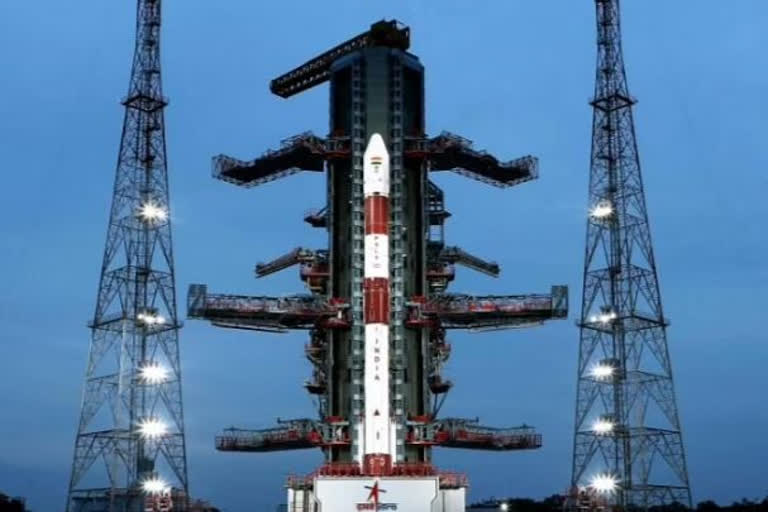Sriharikota: In its second successful commercial mission in a week, ISRO launched three foreign satellites in precise orbit from the spaceport here on Thursday onboard PSLV C53, with the space agency's trusted launch vehicle once again living up to its reputation of being a reliable rocket.
PSLV-C53 is the second dedicated commercial mission of NewSpace India Limited (NSIL), the commercial arm of ISRO which had on June 23 launched GSAT-24 in its first "demand-driven" communication satellite mission post space sector reforms, leasing the entire capacity on board to Direct-to-Home (DTH) service provider Tata Play. On Thursday, the four-stage, 44.4 metre tall PSLV-C53 that blasted off from the second launch pad of Satish Dhawan Space Centre, placed the three Singapore satellites--DS-EO, NeuSAR and SCOOB-1 in intended orbit of 570 km.
ISRO Chairman S Somanath confirmed that the mission achieved its intended objective, saying the rocket placed the three customer satellites "in the precise orbit of 570 km with a 10 degree inclination" and congratulated NSIL for accomplishing "yet another major mission this month itself," the earlier one being the GSAT launch last week. "With today's mission, all these three satellites are placed in the right orbit," Somanath said in his post-launch address from the Mission Control Centre.
After the primary mission, the PSLV 4th stage is going to "write some poems in orbit," he said, referring to the PSLV Orbital Experimental Module (POEM). POEM is going to be functional after this, taking over the control of the primary mission computer to another one and the fourth stage will be powered, generating power on board and will be stabilised with altitude control and host some experiments by some of young startups enabled by InSpace, Somanath, also Secretary, Department of Space, said.
Mission Director SR Biju described the launch as "wonderful" and said the launch vehicle injected the three "precious" satellites in the desired orbit. He also said PSLV was in a different configuration this time, the core alone version, "and we are coming back with this variant after a pretty long time." "We had to introduce some changes to improve the productionisation of PSLV so that we can meet the growing demand of customers and all those changes which we have implemented have yielded results," he said.
The idea for this mission was conceptualised in a record time of three months and "it is effectively two missions rolled into one mission," he added. D Radhakrishnan, CMD, NSIL, said their association with Singapore customer has been quite long. It was a national mission that NSIL was undertaking and in the coming months and years, there will be many more dedicated missions for its customers, both national and international, he said. Earlier, the launch vehicle lifted off at 6.02 PM at the end of the 25-hour countdown.
This is the 55th mission of PSLV, often described as ISRO's trusted workhorse and the 15th one using the PSLV-Core Alone variant. It also marks the 16th PSLV launch from the second launch pad. The mission, which is designed to orbit DS-EO satellite along with two other co-passenger satellites from ST Electronics, Singapore, proposes to demonstrate the utilisation of the spent upper stage of the launch vehicle as a stabilised platform for scientific payloads subsequent to the separation of the satellites, the Indian Space Research Organisation (ISRO) said.
DS-EO is a 365 kg satellite while NeuSAR weighs 155 kg. Both belong to Singapore and are built by Starec Initiative of the Republic of Korea, while the third satellite is a 2.8 kg SCOOB-1 of Nanyang Technological University (NTU), Singapore. POEM DS-EO carries an Electro-Optic, multi-spectral payload that will provide full colour images for land classification, and serving Humanitarian Assistance and Disaster Relief needs. NeuSAR is Singapore's first small commercial satellite carrying aR payload, which is capable of providing images in day and night and under all weather conditions.
SCOOB-I is the first in the Student Satellite Series (S3-I), a hands-on student training programme from the Satellite Research Centre (SaRC) at Singapore's NTU School of Electrical and Electronic Engineering. The POEM activity performs in-orbit scientific experiments using the spent PS4 stage as an orbital platform, ISRO said. It is the first time that the PS4 stage would orbit the earth as a stabilised platform.
Attitude stabilisation is achieved using a dedicated NGC system, it said. POEM derives the power from the solar panels mounted around the PS4 tank and a Li Ion battery. POEM carries six payloads including two from Indian Space Start-ups M/s Digantara and M/s Dhruva Space, enabled though IN-SPACe and NSIL. (PTI)



